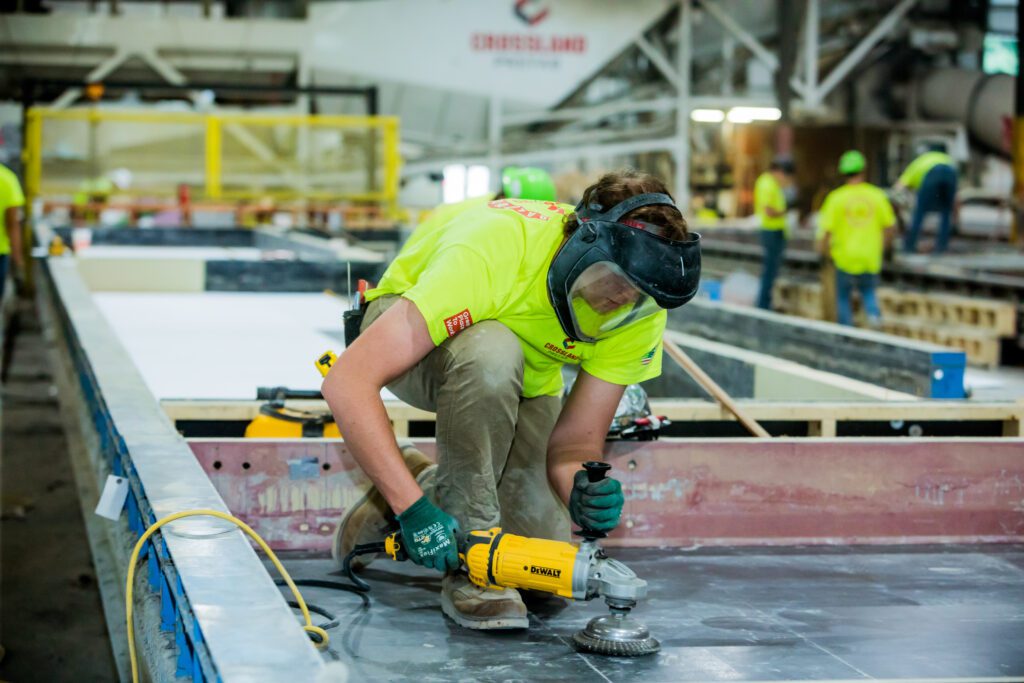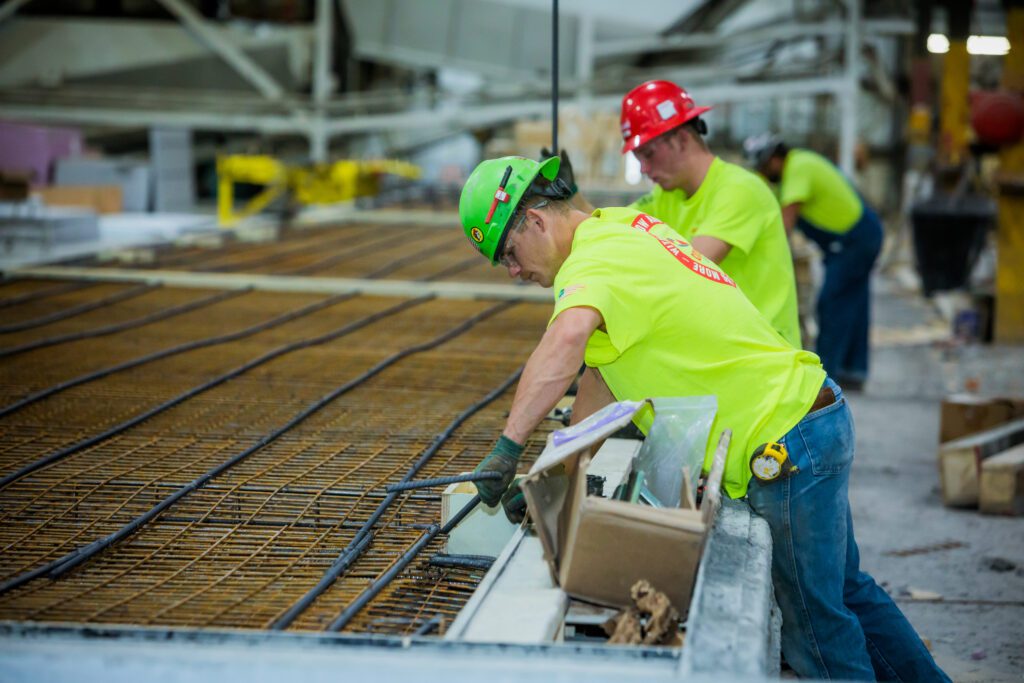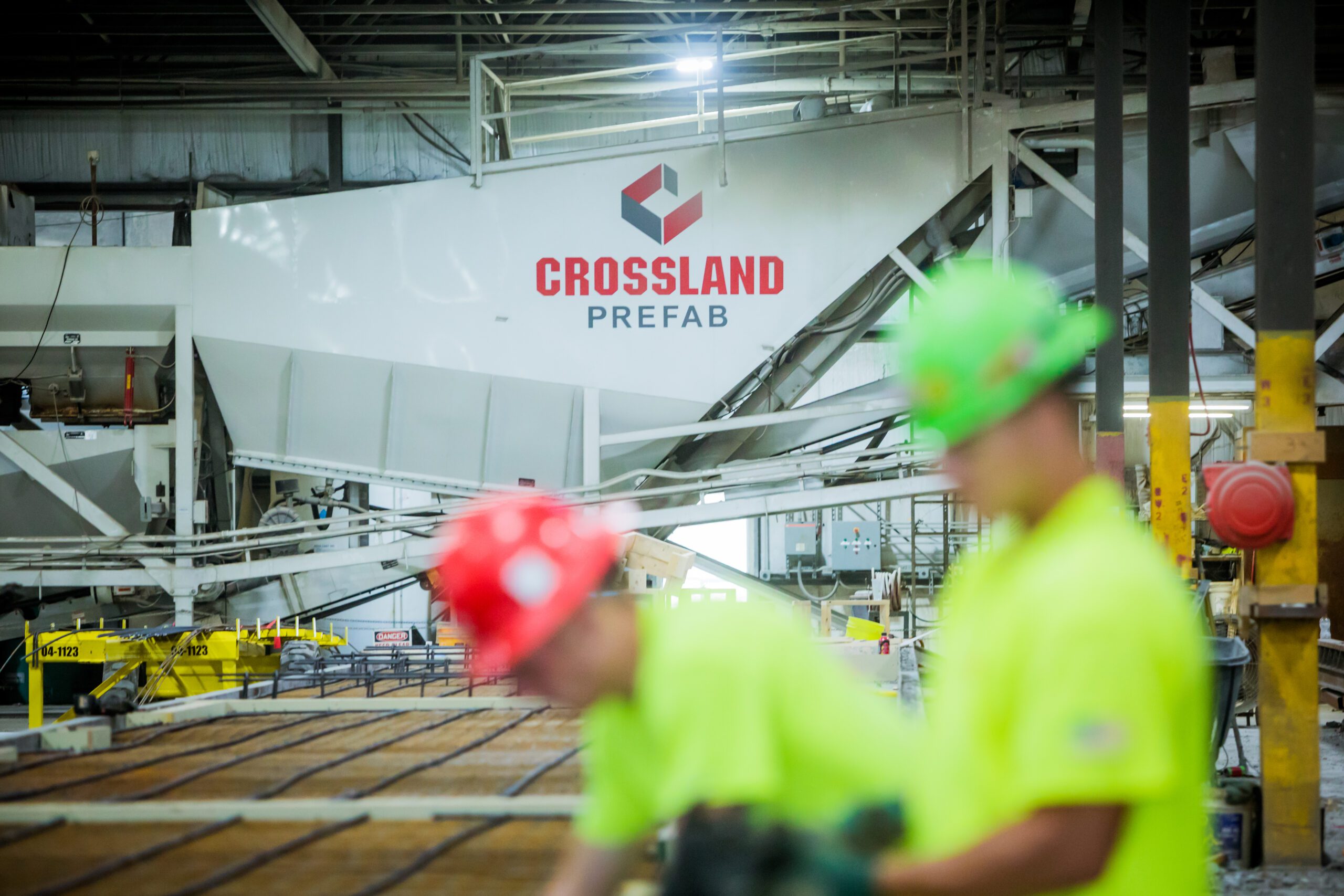The construction industry is experiencing a transformation like never before, and at the heart of this evolution is prefabrication. This innovative approach to building is redefining traditional construction methods, offering significant advantages in quality control, efficiency, and safety. As the demand for faster, cost-effective, and more sustainable construction grows, prefabrication is becoming the go-to solution for developers, contractors, and architects alike.

What is Prefabrication?
Prefabrication, also known as off-site construction, involves manufacturing building components in a controlled environment before transporting them to the construction site for assembly. This method contrasts with traditional on-site construction, where every phase—fabrication, assembly, and finishing—is completed in one location, often subject to unpredictable conditions. Crossland Prefab, our in-house precast concrete supplier, specializes in manufacturing high-quality concrete panels that bring efficiency and durability to modern projects.
Key Benefits of Prefabrication
1. Improved Quality Control
One of the greatest advantages of prefabrication is the ability to ensure consistent quality. Manufacturing components in a controlled setting eliminates variables like weather conditions, labor inconsistencies, and material waste, leading to superior results. Crossland Prefab utilizes state-of-the-art technology and rigorous testing processes to produce high-performance precast concrete panels, ensuring durability and precision in every project.
2. Reduced Construction Timelines
Time is money in the construction industry, and prefabrication helps significantly shorten project timelines. By manufacturing building elements simultaneously while site preparation is underway, projects can move forward much faster than traditional methods allow. Prefabrication reduces on-site labor, minimizing delays caused by weather or trade scheduling conflicts. This approach is ideal for developers looking to meet deadlines without compromising quality.
3. Enhanced Safety Measures
Construction sites are inherently hazardous, but prefabrication reduces risk factors by moving much of the work to a controlled, factory setting. This shift limits exposure to dangerous working conditions, heavy machinery risks, and environmental hazards. Additionally, the reduced on-site workforce decreases the potential for accidents, creating a safer work environment for all stakeholders.

Common Questions About Prefabrication
How Does Prefabrication Impact Project Costs?
While the initial investment in prefabricated materials may seem higher, the overall project cost is often lower due to reduced labor expenses, minimized material waste, and faster project completion. Additionally, fewer delays mean fewer unexpected expenses, making prefabrication a financially sound choice for many developers.
Is Prefabrication Only for Certain Types of Buildings?
Not at all! Prefabrication can be used for a wide range of construction projects, including commercial buildings, schools, healthcare facilities, warehouses, and multifamily housing. Crossland Prefab’s concrete panels are versatile, customizable, and structurally sound, making them ideal for a variety of applications.
Does Prefabrication Limit Design Creativity?
Far from it. Prefabrication allows for highly customizable designs that meet both aesthetic and structural requirements. Crossland Prefab produces concrete panels that are engineered for flexibility, enabling architects to design unique, innovative buildings without compromising functionality.
The Future of Construction is Here
As technology advances and the demand for faster, more reliable construction grows, prefabrication will continue to shape the future of the industry. Companies like Crossland Prefab are leading the charge by delivering innovative, high-quality precast concrete solutions that not only meet today’s construction needs but also pave the way for a more efficient and sustainable future.
For construction professionals and clients seeking cutting-edge building solutions, prefabrication is no longer an alternative—it’s the new standard.
Interested in learning how Crossland Prefab can help revolutionize your next project? Contact us today to explore the possibilities!
Latest News


